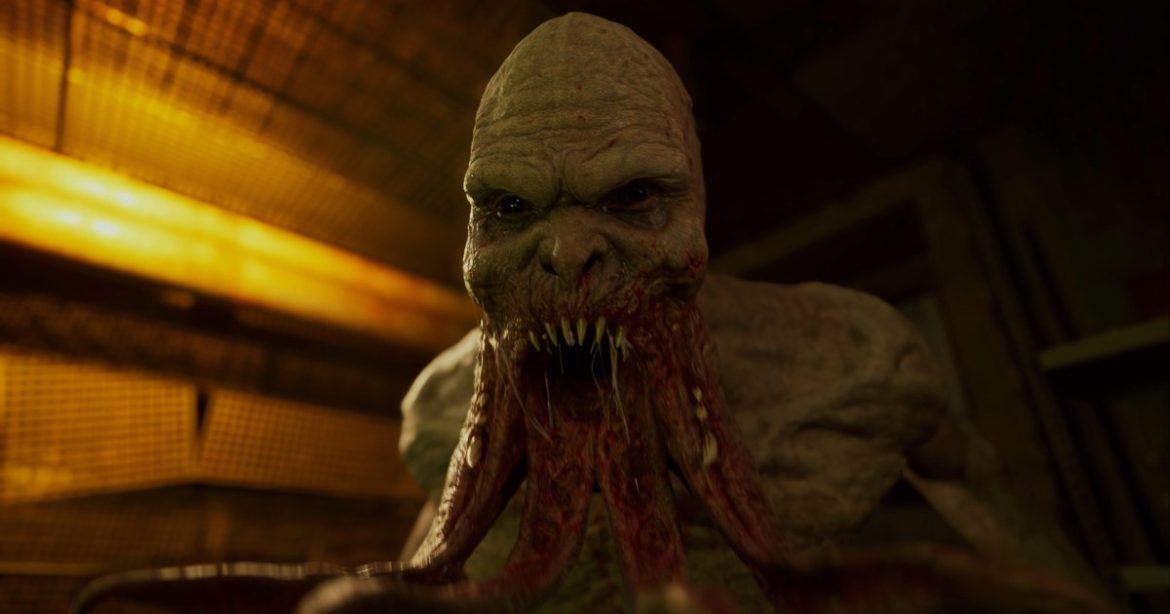I was still getting my bearings in Stalker 2: Heart of Chornobyl as I searched an abandoned building in the dead of night. Using my pitifully dim flashlight to scan the faded walls and floors, I hit a dead end and turned to retrace my steps back outside and onto the critical path. That’s when I saw something curious: A box was falling from nowhere in particular to the ground. I noted that the room was littered with boxes and other refuse upon entering, but they were all scattered on the floor. Seeing one falling for apparently no reason startled me, but I calmed myself thinking it was a simple physics bug that crops up fairly often in giant open-world games such as this. Stalker 2 already had a reputation for being buggy, after all.
Not five minutes later my expectations flipped on their head when I watched a can lift itself off a table, hover for just a moment as if to mock my previous assumption, and then hurl itself at me and knock out a chunk of my health. That was not a bug despite it appearing exactly like one I had encountered in many games prior. This was an invisible enemy known as a Poltergeist whose invisible nature and method of attack mimicked what a typical bug looked like. Suddenly, I had to question my instincts whenever I came across something unexplainable. I couldn’t take anything for granted and that distrust in myself added a new layer of horror.
While it likely wasn’t intentional on GSC Game World’s part, Stalker 2‘s instability due to bugs leads to some surprisingly effective fourth-wall-breaking horror. It’s rare to see in polished modern games, and even rarer to see done well. Some of Stalker 2‘s more innocent bugs add a rare kind of personality to the game, adding a silver lining to a messy experience.
-
‘We were all ready to die’: STALKER 2 documentary reveals the war behind the game
-
Stalker 2: Heart of Chornobyl: release date, trailers, gameplay
-
After Amazon’s Fallout, these games deserve TV adaptations next
Is it a bug or a feature?
Stalker 2 is intentionally scary in many ways. Poltergiest enemies are a perfect example, but horror always becomes dull the more contact you have with it. An invisible enemy is effective the first time because we don’t understand the scope of what’s going on. After you’ve encountered — and killed — a few, the shock wears off. Stalker 2’s bugs throw a wrench into things, even if accidentally, by adding an element of uncertainty. When an unpredictable bug can be confused for something intentional, and vice versa, it creates an unease that the player can never really shake off.
Situations like this popped up just often enough during my playtime to keep me constantly second-guessing my own intuition. Was my gun jammed, or was the sound simply missing again? Was that overlapping audio of a dog howl just one dog’s audio accidentally triggering multiple times on top of itself, or was I about to be rushed by an entire pack of feral K-9s? I ended up loving the fact that the answer could be different even under the same circumstances. Stalker 2 never let me get comfortable or overconfident, even when I thought I knew all the tips and tricks.

This isn’t a feeling I’ve experienced since Eternal Darkness: Sanity’s Requiem in 2002. That GameCube cult classic famously utilized a sanity effect system in which odd things would start to happen based on your character’s mental state. These effects attempted to make the player question their own perception beyond the game. Things like your TV volume being lowered or the game claiming to delete your save brought the fear beyond the boundaries of the TV screen. Stalker 2‘s bugs often deliver a similar experience, but not intentionally. They give Stalker 2 personality through its unpredictability.
Stalker 2 bills itself primarily as a horror immersive sim, and what is more immersive than things that neither the player nor developer could account for? Some bugs can pull us out of the experience, and there are some issues with this game I won’t try to justify. The ones I’m talking about are the kinds that make a game feel less like a game. They kept me from feeling too comfortable and familiar with The Zone, which is the exact response the game is trying to evoke. I would’ve still greatly enjoyed my time in Stalker 2 had it run without a hitch, but those bumps in the road made my playthrough feel truly my own.
As I reflect on this, Kintsugi comes to mind. This is a form of Japanese art in which broken pottery is repaired using precious metals such as gold, silver, or platinum. The result is an expression that highlights and embraces the flaws in a work rather than being embarrassed or trying to hide from them. The flaws become the most beautiful aspect. GSC Game World didn’t intend to make a game with bugs (and has already pledged to smooth as many of them out as possible) but, setting aside the extreme ones that impact performance, cause crashes, or even progression blockers, I have found the beauty in them.




